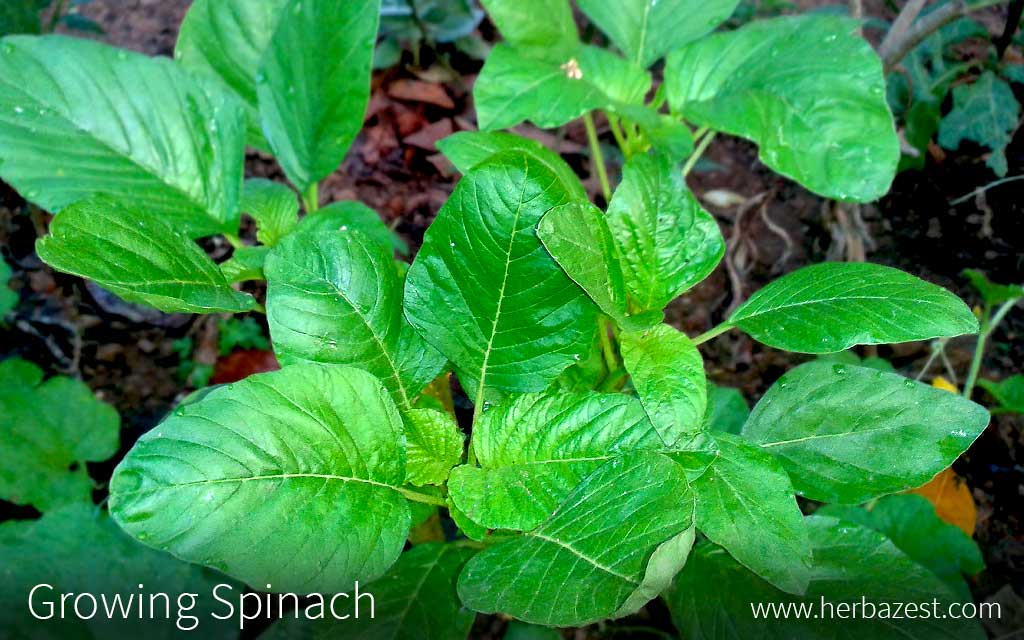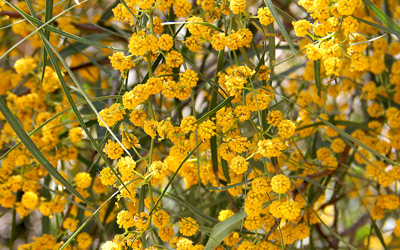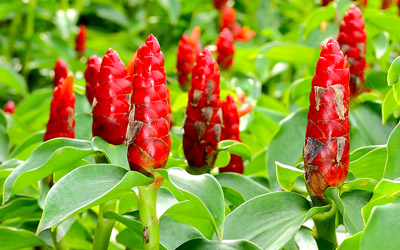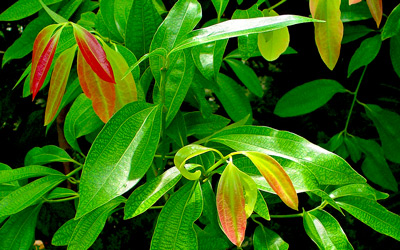Spinach is a great favorite among gardeners because it is a low demanding, edible herb that can be grown year-round, depending on climate conditions. However, its optimal development depends on right temperatures, soil nutrients, and frequency of watering, among other factors. These easy to follow growing guidelines will facilitate the cultivation and care of spinach at home.
1. Preparing the Soil
Spinach thrives in warm, fertile, well-drained, loamy sand soil. It is important to note that spinach is very sensitive to acidity, thus testing the soil before planting is advised. A pH level of 6.4 - 6.8 is ideal to grow this herb. If necessary, the planting area can be amended with lime.
Temperate conditions are needed for spinach. Seeds can germinate at temperatures of 40 - 70°F (4 - 20°C), but the plant will grow best at 50 - 60°F (10 - 15°C). Spinach can withstand frost and even temperatures as low as 20°F (-6°C), but temperatures above 70°F (20°C) will make the leaves bitter.
2. Planting
Planting Spinach Outdoors
Spinach seeds should be planted one to four inches (2 - 10 cm) apart in rows that are 12 - 18 inches (30 - 45 cm) apart. Spinach plants need sun to grow, but they also require partial shade to prevent them from becoming overheated or dried out, which causes bitterness.
Because warm weather can damage the taste of spinach leaves, it is not an ideal plant for very warm climates, nor should it be grown during the hottest parts of the summer in more temperate regions. If planting in the spring, the seeds should be sown as soon as the soil becomes soft enough, approximately four weeks before the last frost.
Alternatively, spinach can be planted much later in the summer for a late fall harvest, or can even be planted in the fall for a winter crop - the plant will be dormant during the winter, but will be ready for harvest early in the spring.
Planting Spinach Indoors
Spinach may be sown in pots indoors to be later moved outside, but since this plant is difficult to transplant, this should be done only if necessary - for instance, if early spring is too rainy and damp to support early spinach growth. These seeds should be planted three to four inches (7-10 cm) side once the plants have several true leaves.
Spinach may also be grown indoors for its entire life cycle without being transplanted outside. For this method, a lighting system is required to simulate the sunlight that the plant needs to grow. Spinach seeds should be planted in plastic pots, one to two seeds in each pot, in about three to four inches (7 - 10 cm) of soil. Cover pots with trash bags until they begin to sprout, when they can be placed under the lights. Water and fertilize them frequently.
3. Plant Care
Watering
Without adequate moisture, spinach will bolt, or go to seed, which results in bitter-tasting leaves. To avoid bolting and to ensure the best tasting leaves, spinach should be given frequent moisture. On average, spinach should be given one inch (2 cm) of water every week unless recent rainfall has been adequate to quench the plant's thirst and prevent the soil from drying out.
Fertilizing
Spinach needs plenty of nutrients in its soil, which often means it requires fertilizer. Early-spring plantings are more likely to require nitrogen fertilizers, since soil will have less availability of this nutrient then. If leaves begin to turn light green, it means that the spinach plant is not receiving enough nitrogen and should be fertilized.
Pruning
As the spinach plant grows, leaves that are ready to be eaten may be pinched off in order to focus the plant's energy on the younger leaves, improving their taste. Additionally, if plants grow too close together - one inch (2 cm) or less - they may need to be thinned in order to give each plant enough room. Overcrowding is another potential cause of bolting.
Weed Control
Spinach is a weak competitor, which makes it very vulnerable to weeds. This means that weed control will be necessary for as long as the plants are growing to prevent the weeds from taking needed resources from the spinach. Smaller weeds can be hand-pulled, but larger weeds may need to be cut off at the soil level to avoid damaging the spinach plant's fragile root system. The area around the spinach plant can also be mulched to discourage weed growth, which has the added bonus of keeping the soil from drying out.
4. Pest & Disease Control
To keep spinach healthy and bug-free, it's important to know about the kinds of pests and diseases that may pose a risk to the plant.
Pests
Spinach plants are often attacked by aphids. They are easily visible on the leaves, and can be removed either manually or by using a stream of water or a chemical pesticide.
Spinach leafminer is another pest that damages spinach plants. These flies lay eggs on the underside of spinach leaves, and once the maggots hatch, they burrow into the leaf. Infected leaves can be removed from the plant, but pesticides will not affect the bugs once they are inside the leaf. To prevent spinach leaf miners, a lightweight covering can be set up above spinach plants to keep bugs out. Ensure that the covering is supported well and not touching the plants, as growing spinach may be damaged if the material rubs against the plant.
Also a common bother to spinach plants are slugs, which live in humid areas. To prevent slugs, avoid using mulch if the soil is already very moist.
Diseases
Spinach can sometimes be susceptible to rust, but luckily, most modern varieties of spinach have been bred to be resistant to this disease. Look for rust-resistant breeds when buying seeds.
Leaf spot can damage the spinach plant as well. It begins by causing spots that are clearly visible on the tops of leaves. The spots will then expand and often cause holes in the leaves. The best way to combat leaf spot is with a fungicide.
Spinach may also be susceptible to downy mildew, anthracnose, and damping-off.
Wildlife
Spinach will benefit greatly from a protective fence, since wandering animals like rabbits and deer may eat most of the leaves.
5. Harvest
Spinach leaves can be harvested periodically once a plant has at least six true leaves. Leaves should be harvested when they are approximately three to six inches (7 - 15 cm) long by pinching or cutting them off close to the stem.
Alternatively, the entire plant may be harvested once it reaches maturity. This may be easiest in the spring or if the plant develops a central stalk. To harvest a spinach plant this way, cut the stalk off at the soil line; this prevents leaves from becoming dirty so they can be eaten or stored more easily.
6. Storage
Once spinach leaves have been harvested, they may be stored fresh in a refrigerated area for up to one week. After a week has passed, they will likely begin to get slimy and quickly lose taste along with nutritional value.
Freezing spinach leaves allows them to be stored for a much longer time, and they will lose very few nutrients when frozen, which makes this the ideal method for longer storage.
Spinach can also be canned or dried to store it for long periods of time, but these methods affect the nutritional content much more than freezing the leaves.
Spinach adds a fresh source of iron to any diet, and it can be a useful and ornamental addition to any garden. Growing spinach at home can be an enriching experience and will reward any gardener who invests time and care into nurturing the plant.





